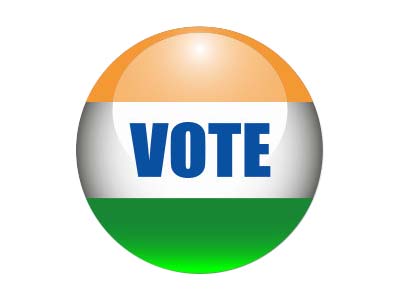Facts and figures on India's general election
 New Delhi - Information on India's general elections, which have been staggered over five dates, April 16, 23 and 30 and May 8 and 13:
New Delhi - Information on India's general elections, which have been staggered over five dates, April 16, 23 and 30 and May 8 and 13:
* Voting in some states will take place over several stages, and the final results are to be announced May 16.
* More than 714 million people form the electorate, an increase of 43 million voters over the last elections in 2004.
* Voter turnout has ranged from 55 to 63 per cent since the first general elections in 1952.
* Voters are to select 543 members of the Lok Sabha, or lower house of the Indian Parliament.
* Two unelected members are nominated by the president as representatives of the Anglo-Indian community, a minority community of mixed Indian and British ancestry.
* Of the 543 constituencies going to the polls, 79 and 41 seats are reserved for disadvantaged castes and designated tribes, respectively.
* The elections are accompanied by state assembly polls in the southern state of Andhra Pradesh, Orissa in the east and north-eastern Sikkim.
POLITICS
* The Indian National Congress party has been in power during 48 of the 61 years since the Republic of India was formed.
* The only non-Congress government that completed a full five-year-term was the 1999-2004 Bharatiya Janata Party-led National Democratic Alliance administration.
* The shortest-lived government in Indian history was formed by the Bharatiya Janata Party (BJP) in 1996. It lasted 13 days.
* Of the 543 elected members of Parliament, 128, or 24 per cent, have criminal cases pending against them. Several cases are for serious crimes, including murder and corruption.
MAJOR ISSUES
* Economic turmoil and the loss of millions of jobs
* National security in the wake of continuous terrorist attacks
* Communalism
ORGANIZATION
* A total of 828,804 polling stations are to be supervised by 2.1 million security personnel.
* More than 1.1 million electronic voting machines are to be used. They were first introduced in 2004.
* The 2009 polls are the first in India to feature the use of photo electoral rolls in nearly the entire country. About 585 million photographs have reportedly been included in the rolls to prevent impersonation and bogus voting.
* The elections are being contested on redistricted constitutional boundaries based on the findings of the Delimitation Commission. Of the 543 constituencies, 499 have been redrawn.
SYMBOLS
Parties have been given symbols by the Election Commission. Among the most widely-known election symbols are:
Hand - Congress Lotus - BJP Hammer and sickle - Communist Party of India (Marxist) Elephant - Bahujan Samaj Party Cycle - Samajwadi Party
CANDIDATE AGE
The members of India's Parliament are primarily of advanced age. In 2004, the oldest candidate and winner was
94-year-old Ramchandra Veerappa from Karnataka in the south. Several 25-year-olds also ran in the election.
LONE VOTER
One polling booth is to be set up in the Gir Forest in India's western state of Gujarat to enable a lone voter, a priest, to cast his vote.
INDELIBLE INK
State-run Mysore Paints and Varnish Ltd is to supply 2 million bottles of indelible ink for the 2009 elections. Each
10-millilitre bottle inks 700 fingers. It has exported ink to many countries, and with nearly 60 countries going to elections this year it is expecting brisk business. (dpa)